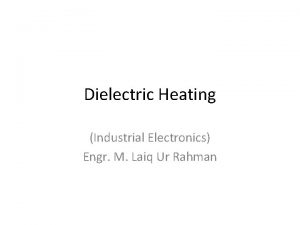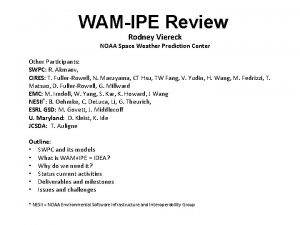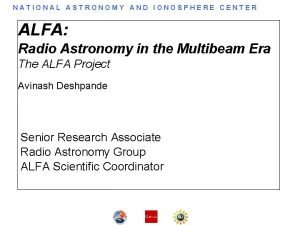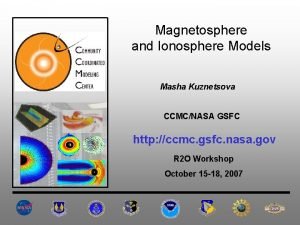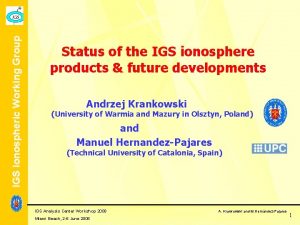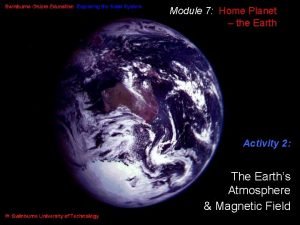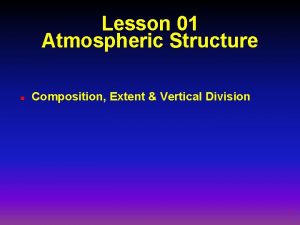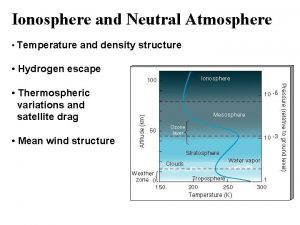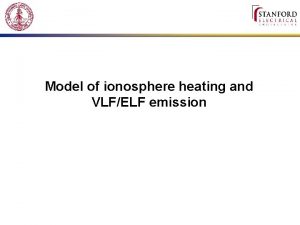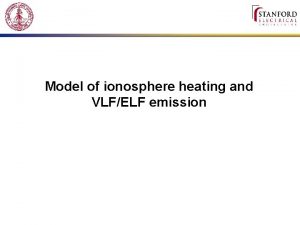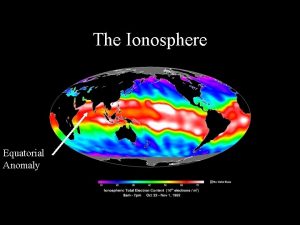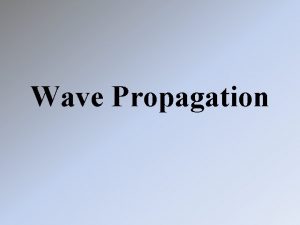Model of ionosphere heating and VLFELF emission Heating









- Slides: 9

Model of ionosphere heating and VLF/ELF emission

Heating model § Heating by HF field is modelled by solving kinetic equation for electron distribution function § Kinetic model includes: § § § HF frequency and geomagnetic field Elastic collisions Inelastic and superelastic collisions Ionization/attachment processes The amplitude of HF field can slowly vary in time (VLF/ELF modulation) § The propagation of the wave includes changes of the ionosphere HF conductivity due to the wave itself (selfabsorption)

Results 1: electron distribution function § Ebr is an electrical breakdown field, which is proportional to frequency and inversely proportional to density. § The electron distributions are similar for same values of h=w/n

Results 2: Time-dependent (modulated) calculations § Square-modulated wave § Electron distribution f(E) is calculated at each moment of time § Conductivity, effective temperature, loss rates and other quantities are calculated from f(E) § Shown here, as an example, is the Pedersen conductivity changing with time

VLF/ELF emission and propagation model § Uses mode theory to solve Maxwell’s equations in stratified medium § Capabilities: § Full wave 3 D solution of both whistler waves launched into ionosphere and VLF waves launched into Earth-ionosphere waveguide § Magnetized plasma with arbitrary direction of geomagnetic field § Arbitrary configuration of harmonically varying currents § Both ionosphere and Earth-ionosphere waveguide § Stable against the “swamping” instability by evanescent waves § Runs much faster than FDFD and FDTD models: § Cell size can be larger than the wavelength § Vertical cell size can be variable § Can be extended to satellite altitudes

Example: application to HF heating § Modulation frequency=1875 Hz § Emission is caused by the change in electrojet current caused by HF heating § The current structure is shown. It has a horizontal pancake shape § We use our method to find E and B field § Size of the calculation domain: § horizontal: 1280 km (in 2 directions) § vertical 300 km

Results 1 § 3 D calculation in a 128 x 85 mesh took ~45 min on a desktop computer (4 GB Ram, 2 x 2. 8 GHz Xeon) § Sz is the vertical component of the Poynting vector § Because of the tilted B field, the upward flow of energy leaves the plane of the picture § The beam stays narrow due to a large size of the emitting region

Results 2 § Sz is calculated at 120 km and 300 km. The beam changes its shape, but insignificantly due to a large size of the emitting region (small perpendicular k-vector)

Results 3 § The observed field on the ground is due to both near field and propagating Earth-ionosphere waveguide modes
